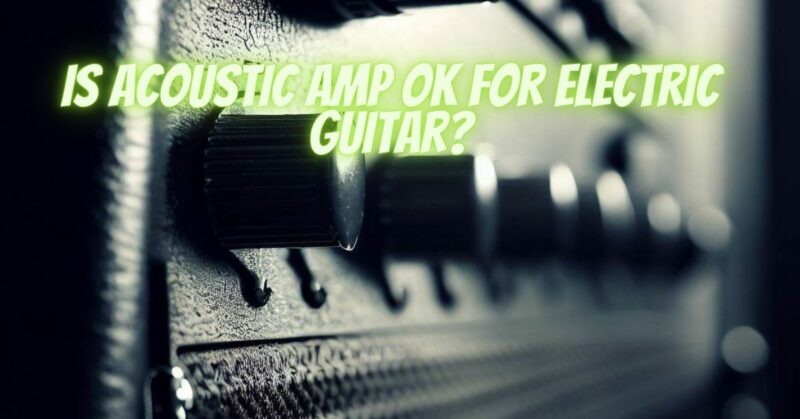The world of music often leads to intriguing experiments, with musicians seeking unconventional ways to shape their sound. One such scenario involves using an acoustic amp for an electric guitar. While acoustic amps are designed for acoustic instruments, the idea of repurposing them for electric guitars raises questions about tone, performance, and compatibility. In this article, we’ll delve into the considerations, benefits, challenges, and potential outcomes of using an acoustic amp for an electric guitar.
Understanding Acoustic Amps
Acoustic amps are specifically engineered to reproduce the natural tonal characteristics of acoustic instruments. They emphasize clarity, balanced frequency response, and midrange frequencies, aiming to faithfully capture the nuances of acoustic guitars, vocals, and other acoustic instruments.
Using an Acoustic Amp for Electric Guitars: Considerations
- Tone and Character: Acoustic amps prioritize clean and natural tones, which can enhance the inherent characteristics of an electric guitar, providing a unique sonic quality.
- Midrange Emphasis: Acoustic amps often emphasize midrange frequencies, which can contribute to a distinctive tonal profile for your electric guitar.
- Dynamic Expression: The clarity and responsiveness of an acoustic amp can encourage dynamic playing, allowing for nuances in your technique to shine through.
- Clean Sound: If you’re aiming for a pristine, undistorted sound, an acoustic amp might be a suitable choice.
Benefits of Using an Acoustic Amp for Electric Guitars
- Clean and Balanced Sound: Acoustic amps deliver a clean and balanced sound that can be advantageous for genres requiring unaltered tone.
- Textural Exploration: The unique tonal character of an acoustic amp can open doors to creative textural exploration and experimentation.
- Performance Flexibility: If you frequently switch between acoustic and electric instruments, using an acoustic amp can offer versatility in a single amplifier.
Challenges and Potential Drawbacks
- Lack of Distortion: Acoustic amps usually lack the built-in distortion and effects commonly found in electric guitar amplifiers. External effects pedals might be necessary for desired tonal versatility.
- Volume Limitations: Acoustic amps are designed for acoustic instruments and might not provide the same level of volume and projection as dedicated electric guitar amps in larger venues.
- Genre Suitability: While the clean and balanced nature of acoustic amps can suit various genres, they might not be ideal for styles that rely heavily on distortion and aggressive effects.
Expert Tips for Using an Acoustic Amp with an Electric Guitar
- External Effects: Utilize external effects pedals to introduce distortion, overdrive, or other effects that might be lacking in the acoustic amp.
- EQ Adjustment: Experiment with the amp’s EQ settings to find a balance that complements your electric guitar’s tonal characteristics.
- Microphone Amplification: In larger venues, consider using a microphone to amplify the acoustic amp, ensuring your electric guitar’s sound reaches the audience effectively.
Using an acoustic amp for an electric guitar is a venture that can yield unique sonic results. While there are challenges, the clean, balanced, and distinctive tone offered by an acoustic amp can be an exciting option for certain genres and artistic pursuits. As with any creative endeavor, it’s crucial to consider your musical goals, tonal preferences, and the level of versatility you seek from your amplifier setup. By embracing the unexpected and venturing into uncharted sonic territory, you may uncover new dimensions of your electric guitar’s sound that truly set you apart as a musician.


